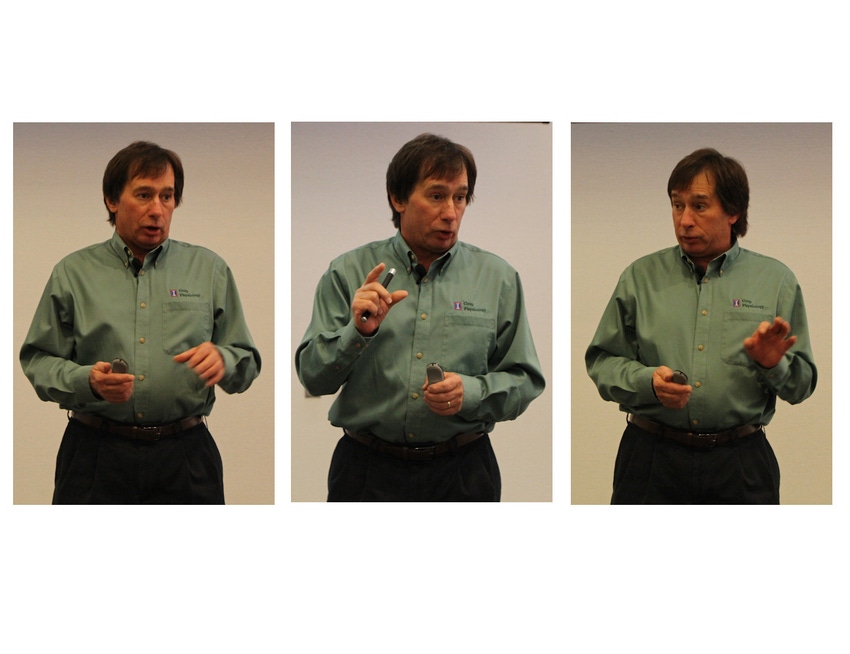February 24, 2016

Two men in the quest for high-yield corn, one a professor and the other a farmer, are turning the phrase “the devil’s in the details” on its ear. Both will tell you it’s the details that make the difference between getting the average of 170 bushels per acre and the record of 500-plus. In this two-part series we'll feature information from Randy Dowdy and Fred Below.
We featured Randy Dowdy in the first part of this series. In this second installment, Fred Below, plant physiologist, and University of Illinois researcher is well-known for his work on high-yield corn and soybeans. He developed “Seven Wonders of the Corn Yield World” and “Six Secrets of Soybean Success” teaching tools to improve crop productivity.
These interviews were captured during speaking engagements held late in 2015. Each speaker talks about the secrets of growing high-yielding corn and soybeans. Below was a speaker at West Central’s Leaders of In-furrow Technology (LIFT) summit in Minneapolis.
In this installment we have a discussion with Fred Below, who offers insight into the high-yield challenge.
One-on-one with Fred Below
What’s the focus of your talk?
I talk a lot about the crop yield gap, which is the difference in yield between what most growers get and what’s possible. And there is a huge gap. The corn yield record in the United States is 500 bushels per acre. Most growers get 170 bushels.
How do you get to high yields?
A lot of it comes down to better plant nutrition and planting more plants. It is fairly simple, but that’s how it is done. Growers who win the National Corn Yield Contest generally will say it starts with better plant nutrition. They also plant at higher populations and in a higher density, and they plant the best hybrids. They will tell you that the plant can never have a bad day. It has to be happy all the way through the season and is never stressed.
You have developed the “Seven Wonders of the Corn Yield World.” What are those?
There are basically seven factors that each year have a positive impact on crop yield (see table at right). Each factor is given an average bushel-per-acre value. As a general rule, the higher you are on the wonder list, the more control you exert over the wonders below you. If you have an average value of all the wonders, you should be able to grow 260 bushels, which is fairly routine these days. If you get more, it is because of the positive interactions among the factors.
What factor is the most important?
Weather rules, which is why Monsanto spent a billion dollars to buy a weather company. But it takes a systems approach to go to the next yield level. If you are doing something wrong, you can correct one thing. But there is no one thing that you can do to hit a home run of 300-plus bushels. The factors must work together to support or see the full value of the other factors.
Plant population is listed as No. 5. What is ideal?
Corn yield is a function of how many plants are planted per acre. The overall yield over the last 50 years has gone up a little over 2 bushels per acre each year, with a corresponding linear increase in the number of plants. In 1965, the average yield in the United States was 70 bushels per acre, with a plant population of 18,000 plants per acre. Now, 50 years later, the average yield has more than doubled, and the planting population is almost 32,000 plants per acre. Plant populations must continue to go up, despite higher seed costs, in order to see further increases in yield.
How do you improve plant nutrition?
Not all nutrients are used at the same rate in the same way. So we take a feed-to-plant approach rather than try and feed the soil, which shows pretty good potential for increased yield. The plant senses its nutrition at an early stage and grows accordingly. If it starts strong, it has the best chance for higher yield.
What new technologies are improving yields?
One is fertilizer technologies that provide for better nutrient placement, or that combine more than one key nutrient, or that have some aspect that keeps those nutrients more available longer, such as a chelating agent.
What are other examples?
I think narrow rows are the future of corn. Most growers plant in 30-inch rows throughout the Corn Belt. I see the future being 20-inch rows. It has to be in order to achieve the higher plant populations that are needed. Other potential technologies are on the protection side and plant health side that will keep the plant healthy. One of them is the greening or leaf-health effect that comes from strobilurin-based fungicides.
Are in-furrow products important?
We are starting to see synergistic advantages of in-furrow technologies, where a fungicide is applied with an insecticide along with a starter fertilizer. These products enhance and protect the plant or seedling, and by having the nutrients alongside them, can start the plant off to a faster growth trajectory. Ultimately, I think we will have other growth-enhancing technologies that can go in-furrow. I think it is one of the next new things in agriculture.
How about seed technologies?
Today’s genetics offer a lot of yield potential that I don’t think we are fully realizing, which is demonstrated by the corn yield gap. I think each seed has a potential of 600 bushels. The key is managing it to achieve that genetic potential.
About the Author(s)
You May Also Like




